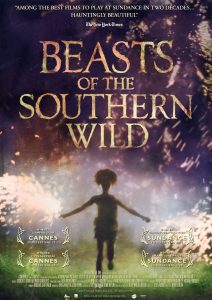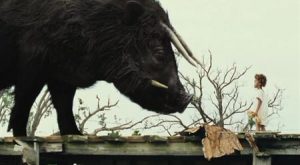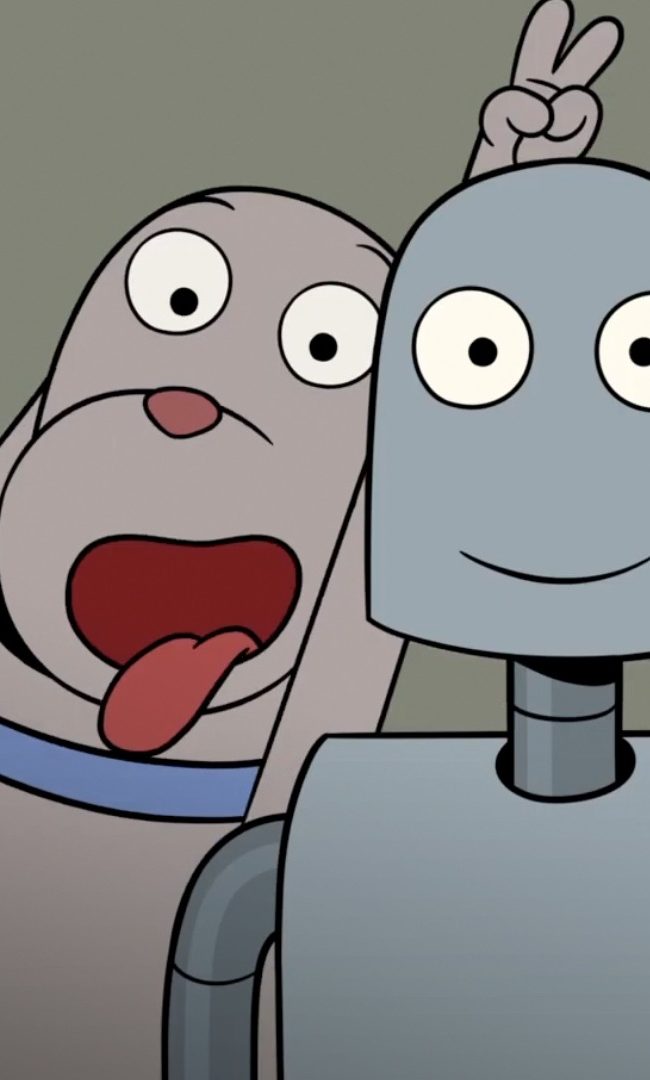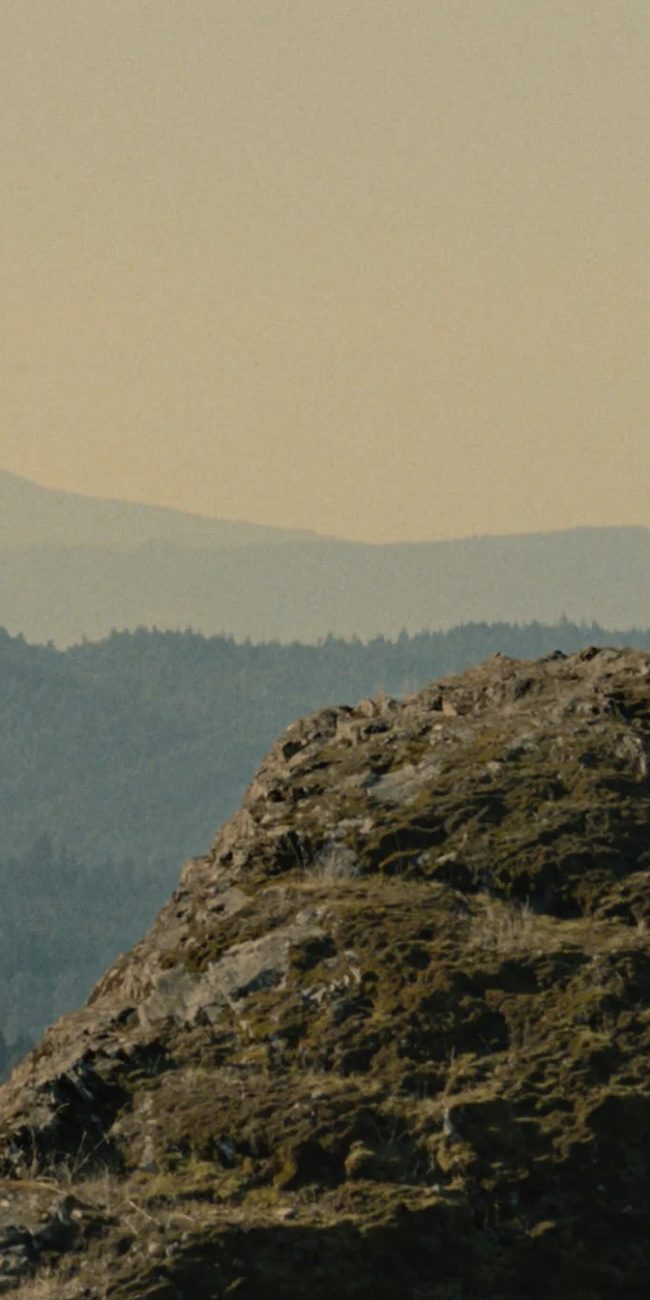ON THE FRINGE, PART NINE: BEASTS OF THE SOUTHERN WILD (2012)
 Beasts of the Southern Wild is a film about the end of the world.
Beasts of the Southern Wild is a film about the end of the world.
Or, more to the point, the end of the universe.
More remarkably still, it is also a celebration. A celebration of survival, of freedom and – why not? – of life itself.
The 2012 picture employs a hearty amount of spectacular and resourceful magic realism in exploring the rarely showcased realm of the deep Louisiana bayou. Virtually the entire plot focuses on a makeshift, ramshackle community completely off-the-radar and lost adrift in the waters on the outskirts of the mainland. Think Into the Wild’s “Slab City” … with a twist of Waterworld.
We are witness here to that unique brand of moviemaking in which two very important questions are constantly asked during viewing: “How are they doing that?” and “Is that really happening?”
The film was nominated for four Academy Awards, including Best Picture, Best Director for young Benh Zeitlin, Best Actress for the even-younger Quvenzhané Wallis (at nine-years-old, Wallis in fact became the youngest person in history to be so honored) and Best Adapted Screenplay.
Zeitlin worked with longtime friend Lucy Alibar, who wrote the experimental play Juicy and Delicious upon which the film was based and in which Wallis’ main character “Hushpuppy” was originally a boy. Alibar’s play was in turn loosely based on her own experience going through the terminal illness of her father, a major plot point of the eventual film, which also won the year’s coveted Caméra d’Or at Cannes and the Grand Jury Prize at Sundance.
Such a fresh film mining relatively new territory in its thunderously powerful way will of course end up with the inevitable divisive reactions. Though it certainly had its detractors (including feminist icon and writer bell hooks), Beasts of the Southern Wild received monumental acclaim, with accolades hailing from the highest platforms including Roger Ebert and President Barack Obama.
But there seemed to be unanimous praise for Wallis, who – at six during the actual production – originally wooed the filmmakers by her resonant scream (which is utilized to full power throughout the film) and ability to belch on command (another superpower Beasts of the Southern Wild features).

Her Hushpuppy is a mischievous and at times devious survivalist – as with the rest of the members of her waterlogged, DIY hamlet consigned to a tiny, isolated island off the Louisiana levee in which residents live in what amount to adult tree forts (including back halves of old trucks, overturned trailers and hopelessly moored boats).
Almost the entire cast are actual denizens of the region. One of the more outstanding non-actors is Hushpuppy’s father, Wink, played by local full-time baker Dwight Henry.
Henry became friendly with the filmmakers when they would come to his shop to nosh and drink coffee while developing the project over the months-long pre-production period and, indeed, had to all but force Henry into being in the film, as he was busied at the time with sustaining his business after the calamity of Hurricane Katrina; he initially had no interest in letting that go for even for a few weeks to take on a part in an indie film.
Thankfully, Henry ultimately conceded to cajoling of the filmmakers and delivers a performance in Beasts of the Southern Wild that has a naïve, ruthless gravitas while appearing as disciplined and composed as that of a seasoned veteran’s.
Hushpuppy is a motherless child running free and wild around her slipshod waterfront village, celebrating the liberation her entire moneyless, anarchic community enjoy in a spellbindingly triumphant opening sequence whose booming and magnificent score (co-composed by director/co-writer Zeitlin) runs welcomingly throughout the proceedings.
“They built the wall that cuts us off,” Hushpuppy observes of the levee separating her “city” from the rest of Louisiana in her voice-over narration that also runs throughout the film, granting the production a kind of fairytale quality as though its story is not only told but experienced through the eyes of this precocious little six-year-old.
A precocious little six-year-old whose version of the world, or – again – the entire universe (as she understands it) is based solely on her infinitesimal spot of “the Bathtub,” the colloquial name of her fictional township.
She’s made to understand by her foul-mouthed teacher Miss Bathsheeba (played to robust perfection by yet another first-timer, Gina Montana) that “everything is made of meat” and that the entire purpose of life is to find food, eat, be strong and survive.
Hushpuppy also chronicles over the course of her storytelling the existence of a mythological beast known as the “Auroch” (not to be confused with the actual extinct animal): a kind of part-boar, part mammoth, with the whimsical, childlike addition of horns stemming from the head as well as identical tusks below; these are true beasts, the stuff of nonage nightmares.
Essentially left to her own devices, Hushpuppy drinks alcohol, makes her own food and intentionally burns down her own “house” to gain some attention from her protective but at-times-brutal father in his own house connected by a treehouse-esque communication wire.
Wink chases Hushpuppy through the wet marshlands of their village only to be confronted by the little girl half his size who knocks her dad – recently back from the hospital for reasons she’ll never fully understand (SPOILER ALERT: He’s dying) – back with an angry, well-aimed punch to the heart after he leans down to slap and berate his feisty daughter.
When Wink totters away and collapses (or, as Hushpuppy alarmingly announces to her teacher whom she finds shortly after: “My daddy fell down”), Hushpuppy believes that she’s “broken” the extremely fragile and otherwise perfect universe in which she lives.

This starts a devastating, dreamlike chain reaction resulting in (actual documentary footage of) the polar ice caps collapsing, crumbling and melting away … freeing up the massive, nightmarish Aurochs from their icy, millenniums-long stasis and releasing them into the water that will eventually lead them to Hushpuppy’s Bathtub archipelago.
The rest of the film grants us Hushpuppy’s adventures in butting heads with her ruthless but ultimately loving father, a storm that sends off most of the rest of her community fleeing for the mainland (and, in a sequence that has to be seen to be believed, the water rising to the top of her village’s rooftops, creating a new Venice, Italy), separation from her father resulting from her fellow citizens and she being shanghaied to the dreaded hospital/shelter on the mainland (where people are “plugged into the walls” when they’re sick and where children are preened, combed and dressed like good little boys and girls in lieu of the torn and shredded shawls and oversized shirts of their typical “Lost Boys” from Neverland apparel they wear back at the Bathtub) and, in the end, a stand-off with the impending herd of Aurochs themselves.
Despite its engaging use of lush magic realism, and its being told almost entirely from the point of view of the limitless imagination of a spritely child, Beasts of the Southern Wild nevertheless establishes onscreen a sense of authenticity about the actual tribulations and conflicts in which Hushpuppy, her terminally-ill father and the rest of the citizens of the Bathtub go through (not to mention, you know, the whole “ice caps are melting” thread that courses throughout a film based in Hurricane Katrina-ravaged Louisiana).
Its childlike perspective is then in fact merely a conduit of the grave world in which it exists, not unlike similar films around the time from around the world such as the easily confused (courtesy its title) Beasts Of No Nation, City of God and the slightly-earlier true-life Bildungsroman mixed with a hint of whimsy, Before Night Falls.
All films depict (and, in some cases, surprisingly, defiantly celebrate) the absolute poverty but absolute freedom (in the words of Before Night Falls’ own Reinaldo Arenas who confesses to having the spirit of a child even as he gets older over the course of the film) of life on the absolute fringe.
They are part of an ongoing international continuum that includes the likes of 1950 Mexican film Los Olvidados, the 1952 French war drama Forbidden Games, 1973 Spanish production of The Spirit of the Beehive, the 1981 Brazilian film Pixote and Greece’s Landscape in the Mist from 1988.
This neotenous, surreal quality of these films can establish more truth and realism for the outside viewer to understand not only what these characters are going through – particularly via the use of non-actors, stories based on or loosely based on actual historical events and inclusion of actual, rarely-seen-elsewhere environments as another “character” in the film – but also what they are feeling internally.
This extraordinary quality can become the mode for how the principle characters are feeling and ultimately comprehending what it is they are going through, even if this vantage point may be slightly skewed (it is, after all, idiosyncratically their own).
It is in a way a truth that can be seen through the abstract looking glasses of the works of Vincent van Gogh, Philip K. Dick, Hunter S. Thompson, Salman Rushdie, Nikos Kazantzakis and William S. Burroughs, all of whom can be considered straight-up-journalists in many ways … who happen to allow the reader/watcher a unique perspective on seeing and understanding their own lives, cultures, traditions, legacies and histories.
These perspectives being so very singular that they can appear to anyone else as fantastical or unreal … particularly if said observer peers in only superficially, missing the subtext between the lines.
It is such an intimate, innovative perspective that brash new filmmaker Sean Baker utilizes in telling the refreshingly authentic and interweaving Altman-esque stories of what otherwise would be yet another tale of the denizens of the ho-hum, been-there-done-that LA fringe observed over the course of one day in his vibrant and truly pioneering vision of the same with his 2015 debut Tangerine.
Prepare for analysis next week as we wrap up this series in style…
MATHEW KLICKSTEIN is (for the time being) a Boulder-based writer/filmmaker who recently completed and has been touring his documentary on 80s/90s TV icon Marc Summers, On Your Marc, to be widely-released soon. His next book, Springfield Confidential: Jokes, Secrets, and Outright Lies from a Lifetime Writing for The Simpsons(co-written with lifetime series writer/producer Mike Reiss, foreword by Judd Apatow), will be released through Harper Collins this June. You can keep up with his regular shenanigans at www.MathewKlickstein.com.











